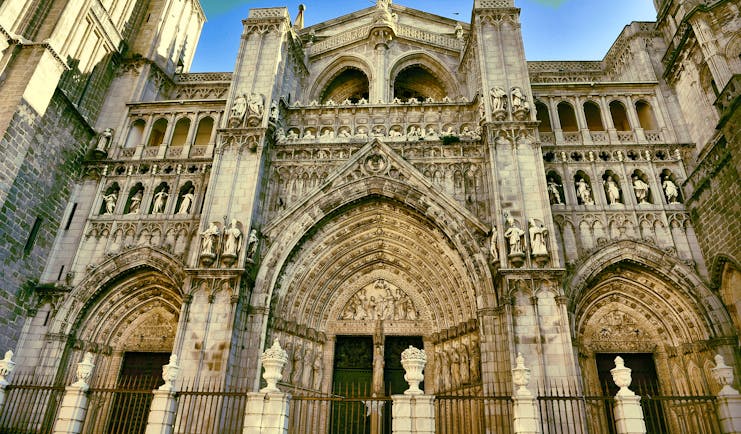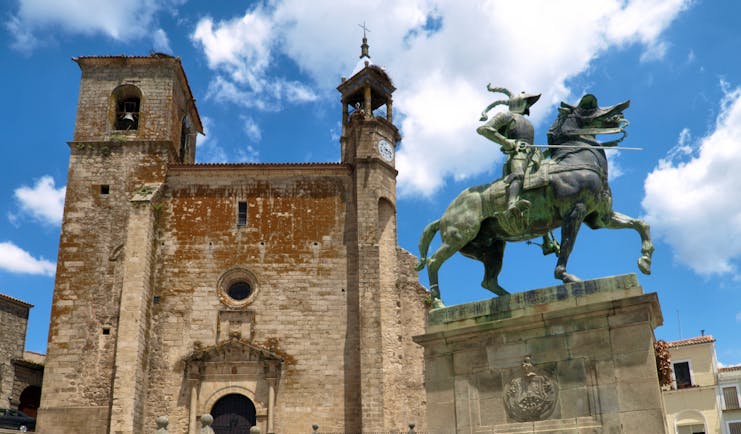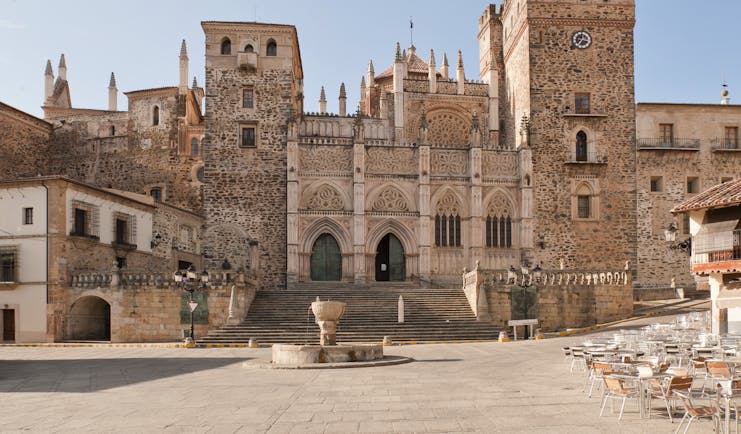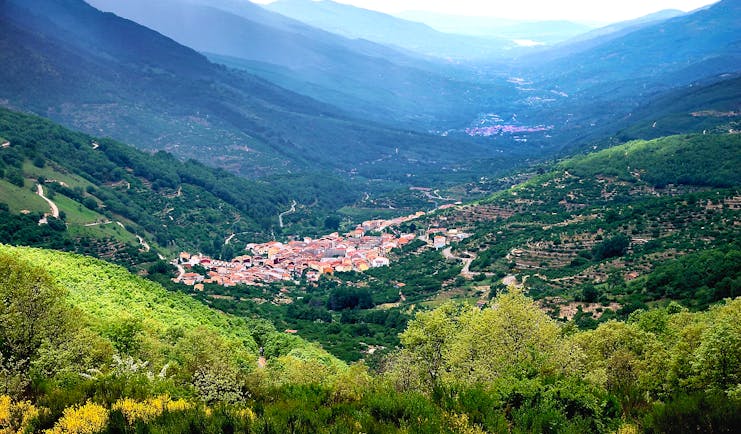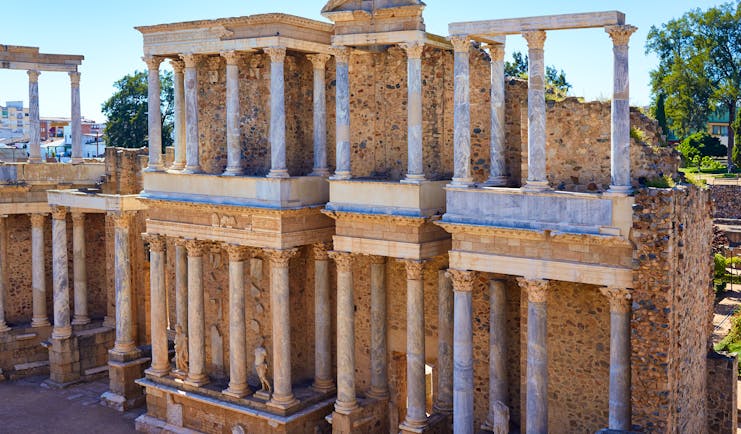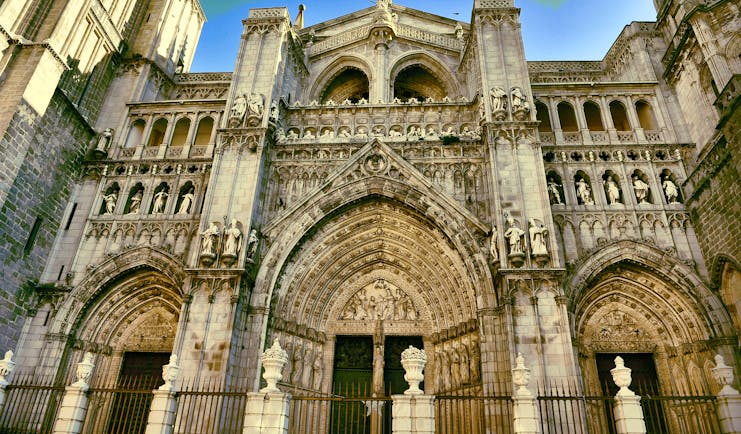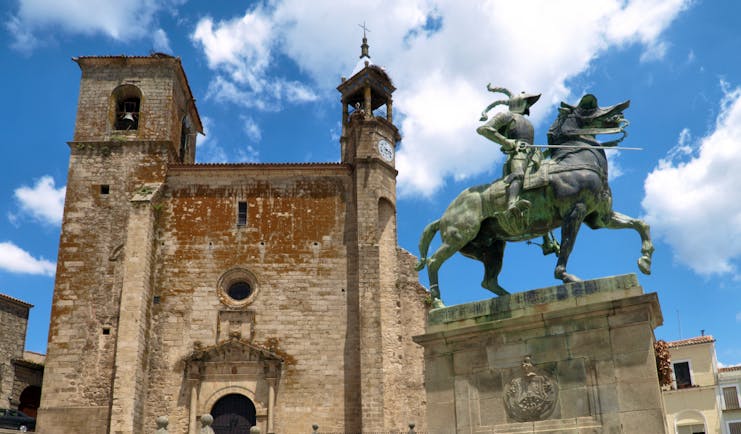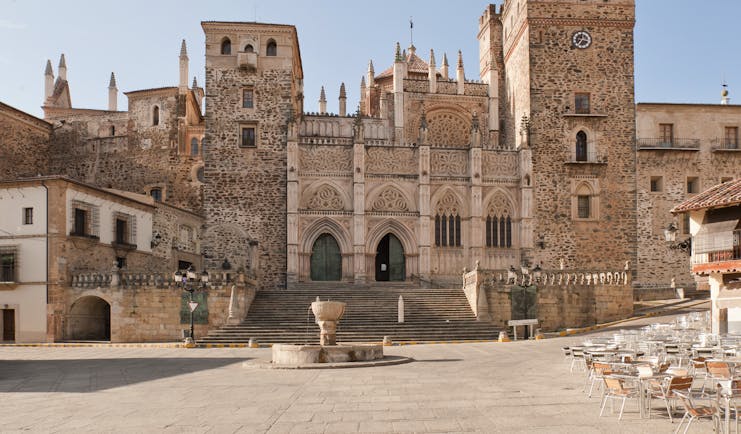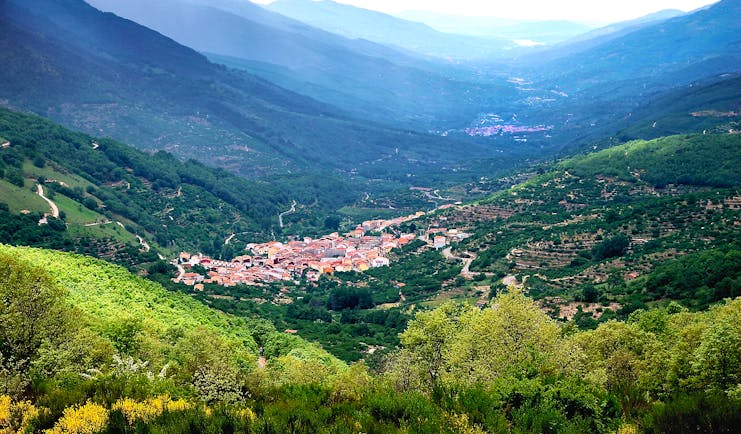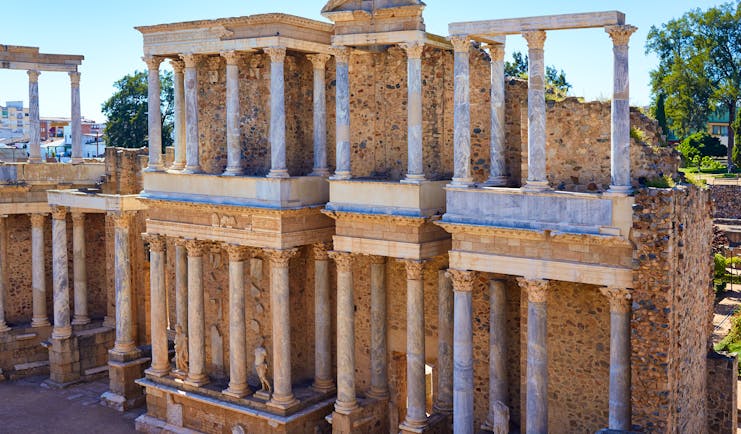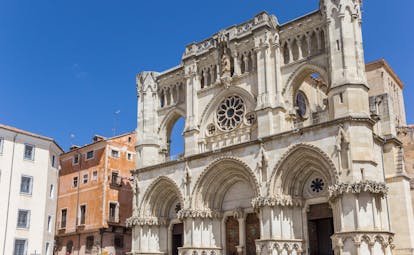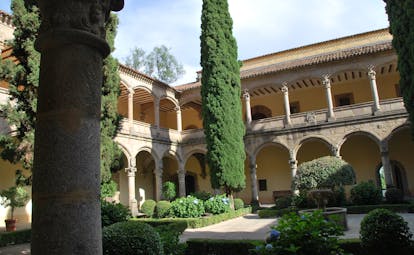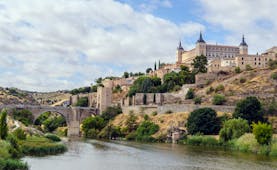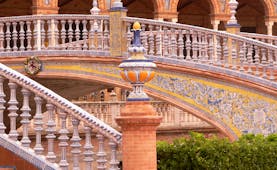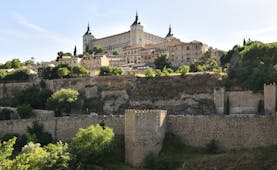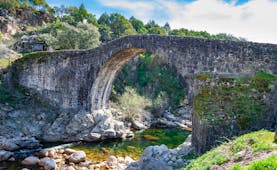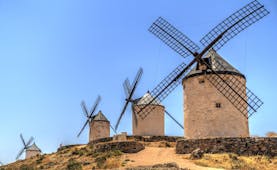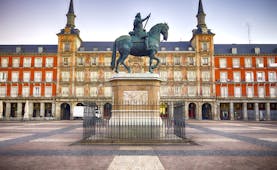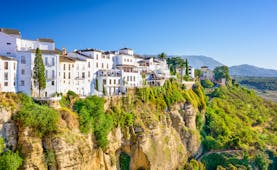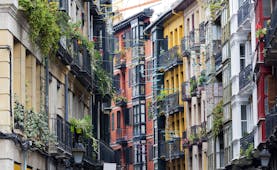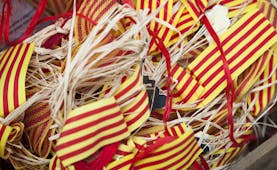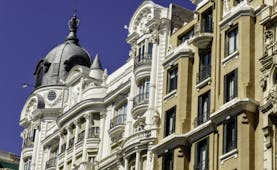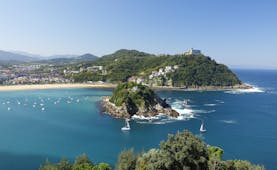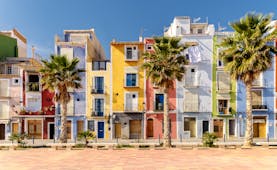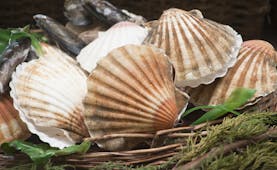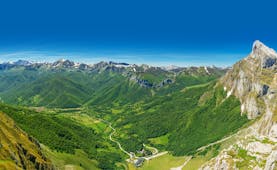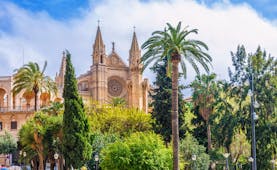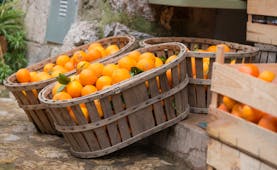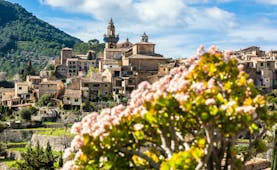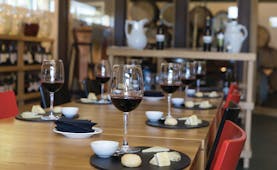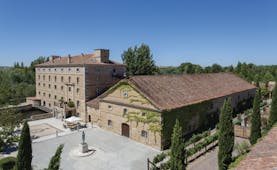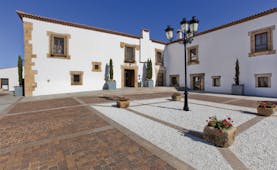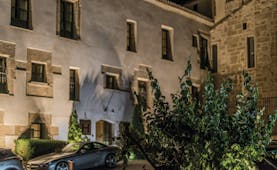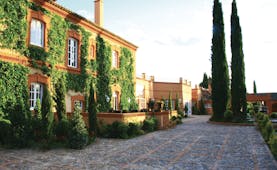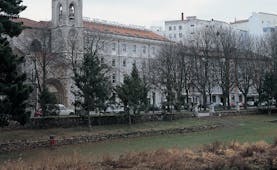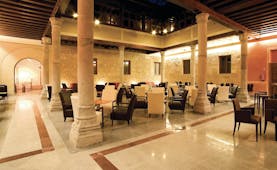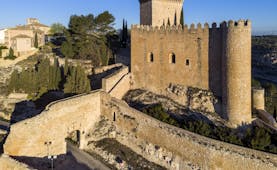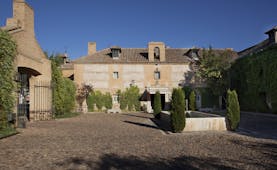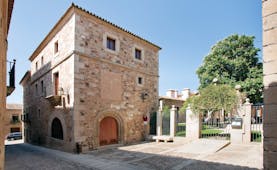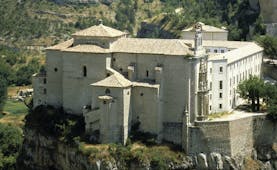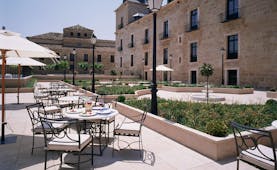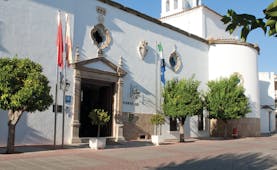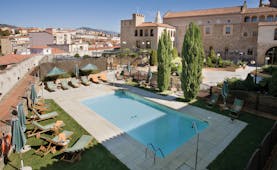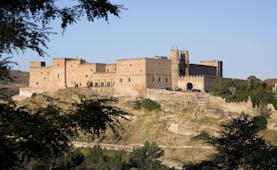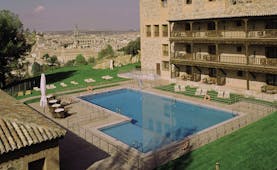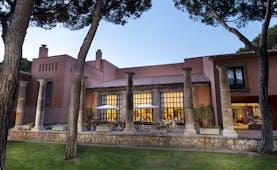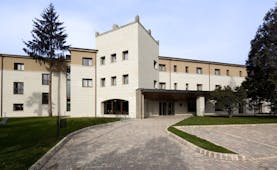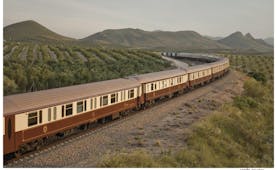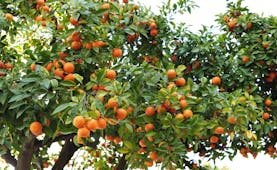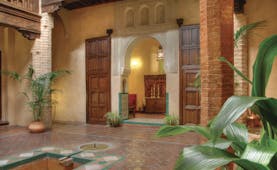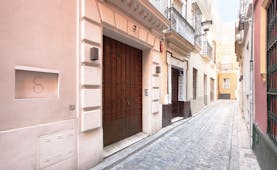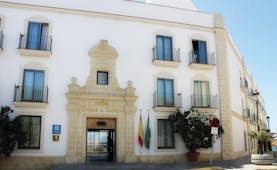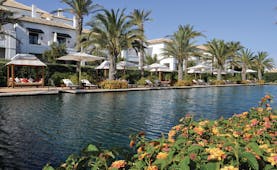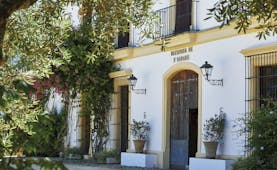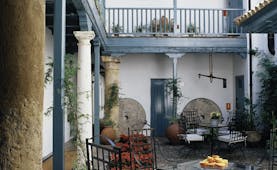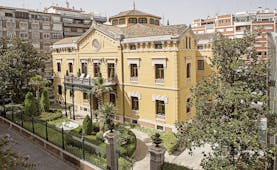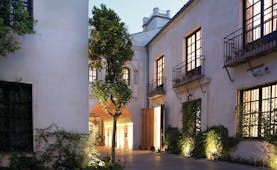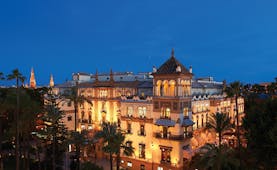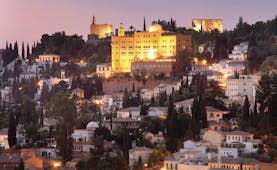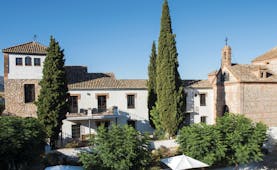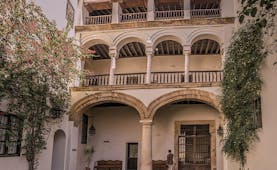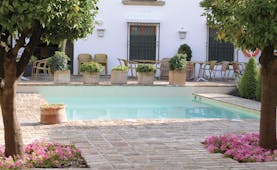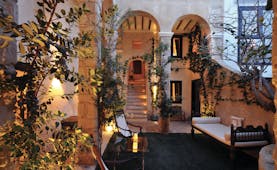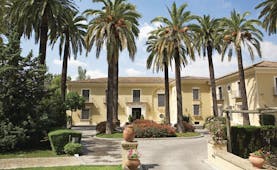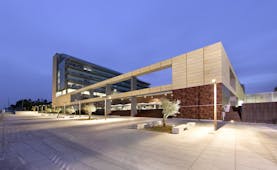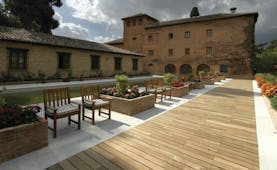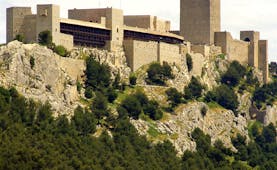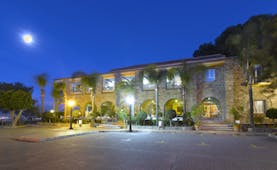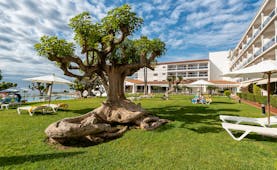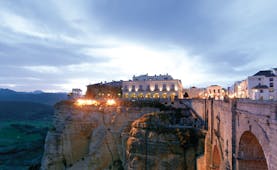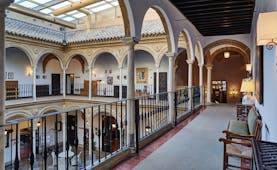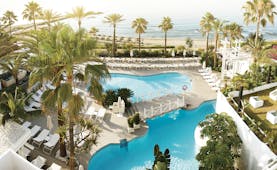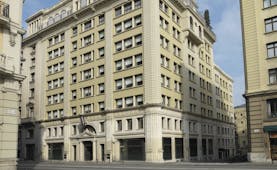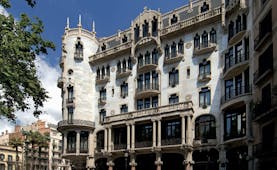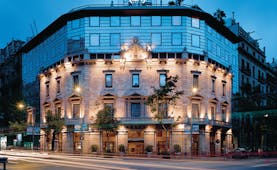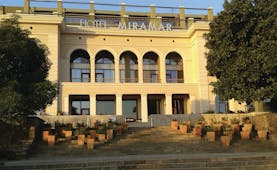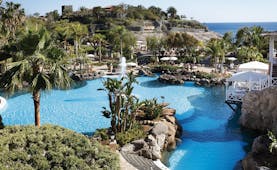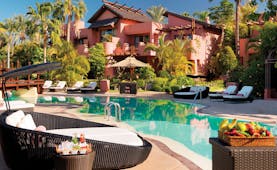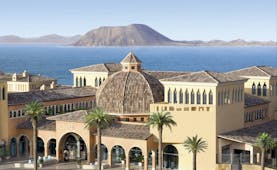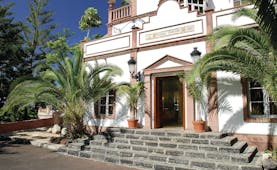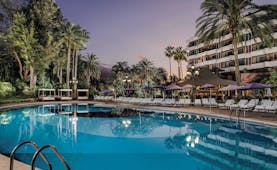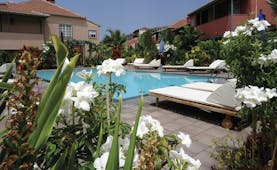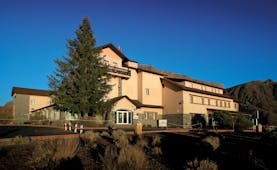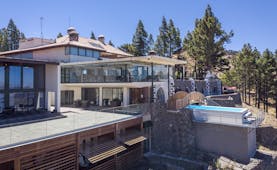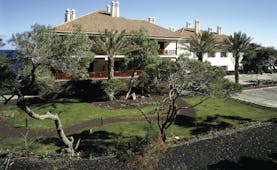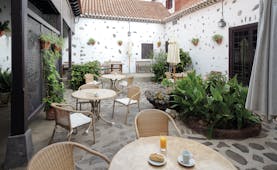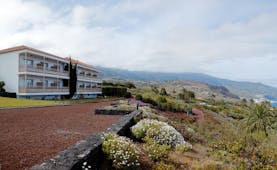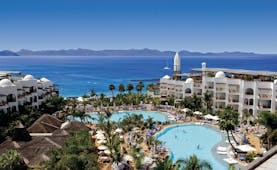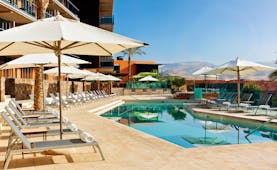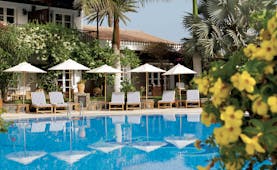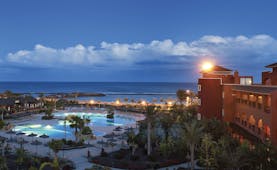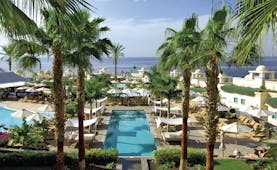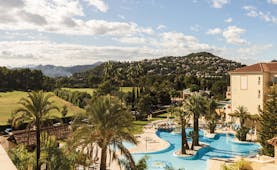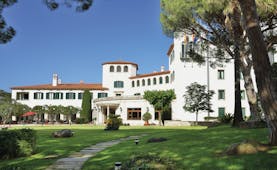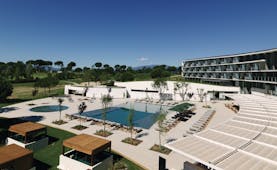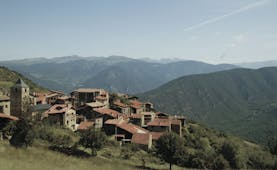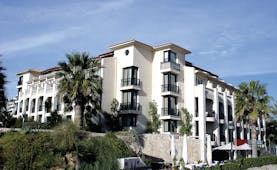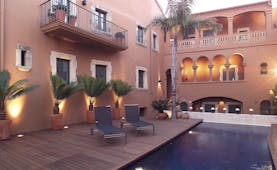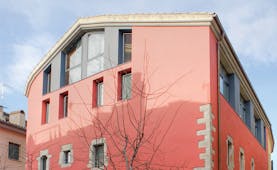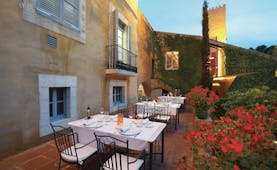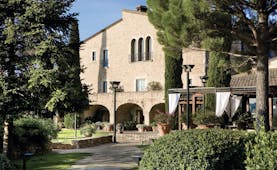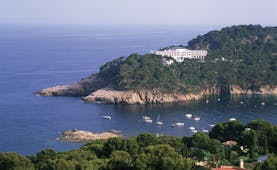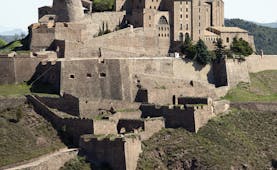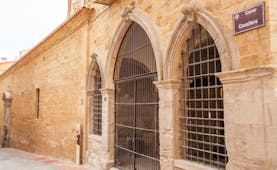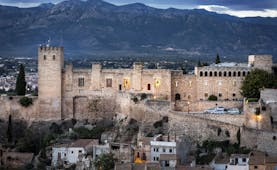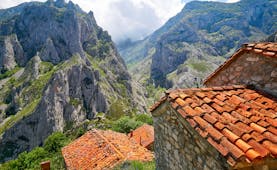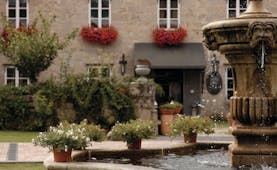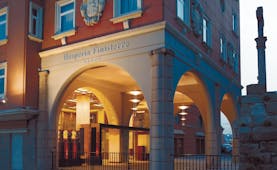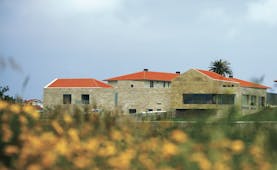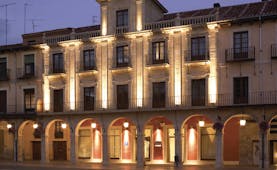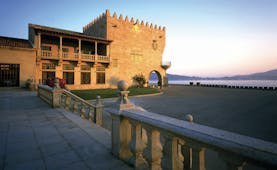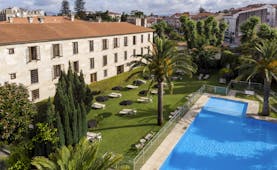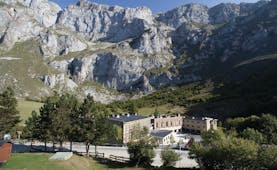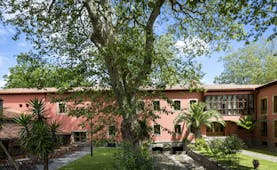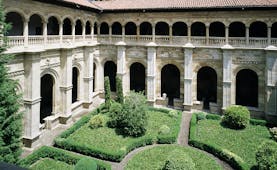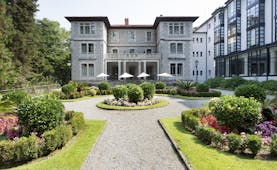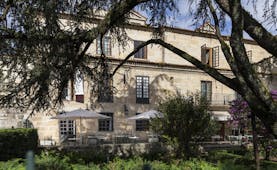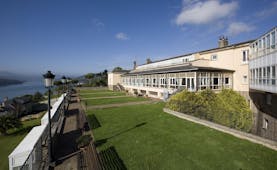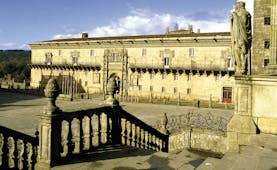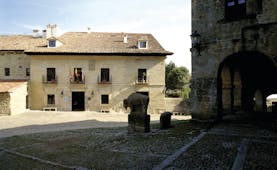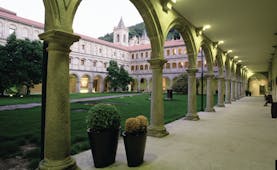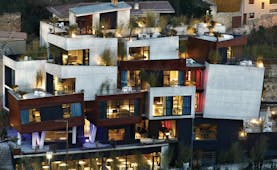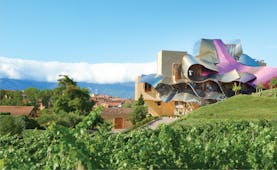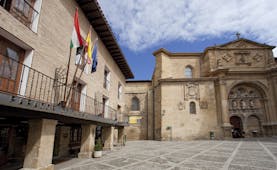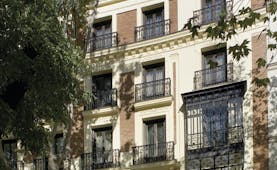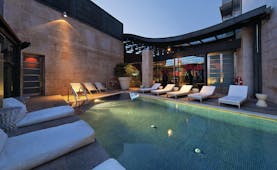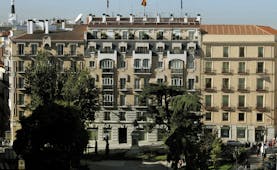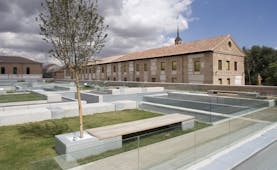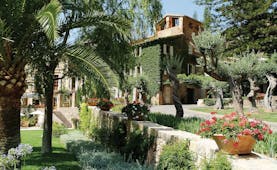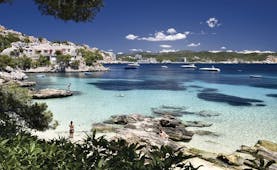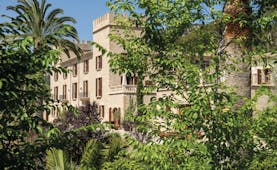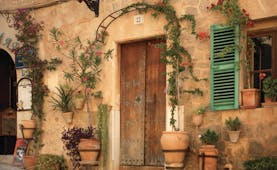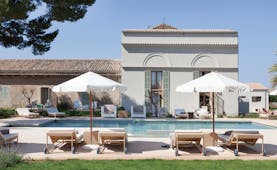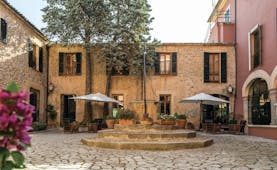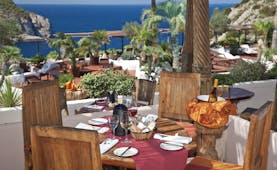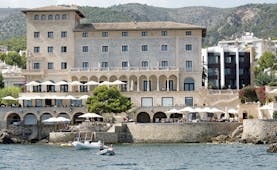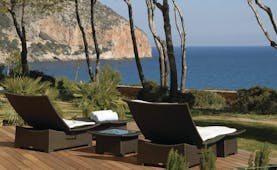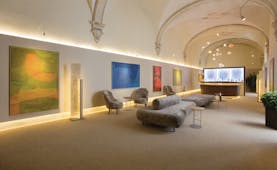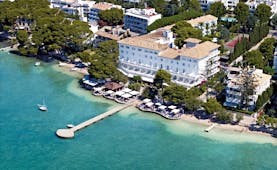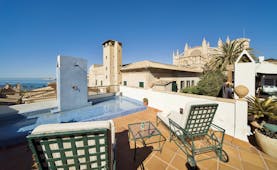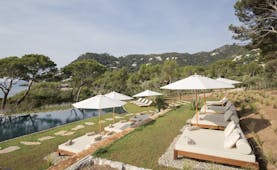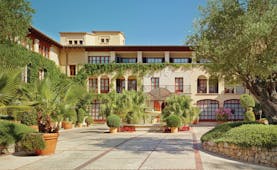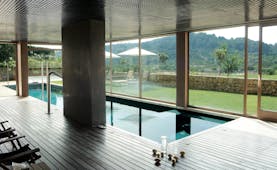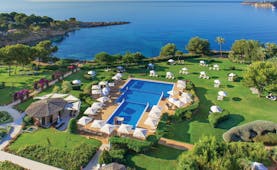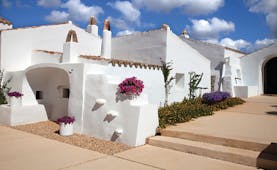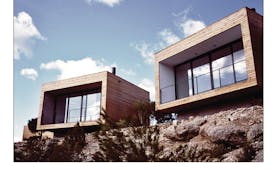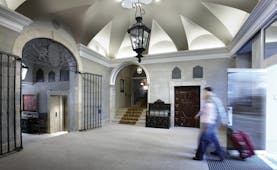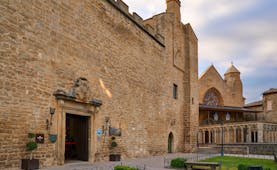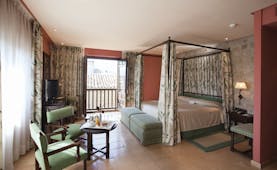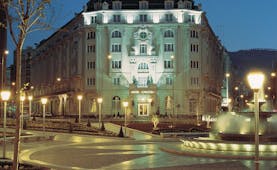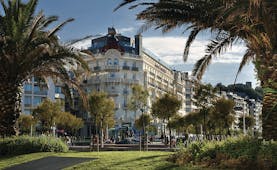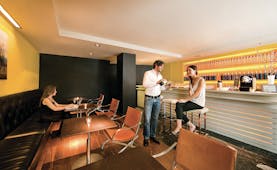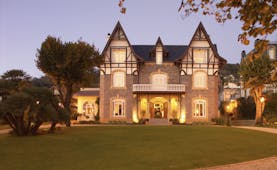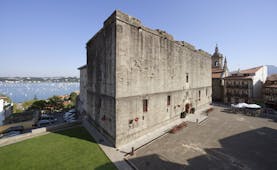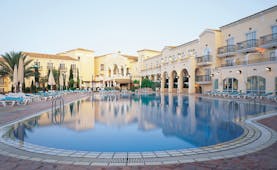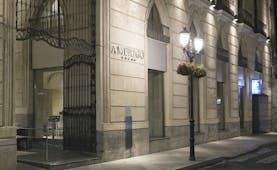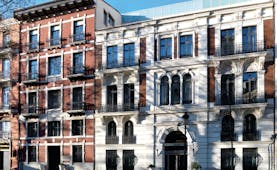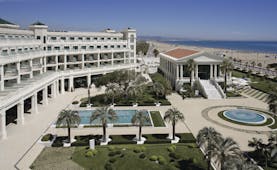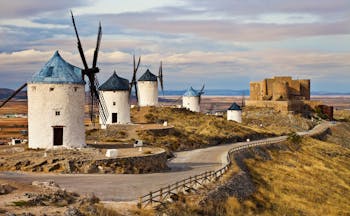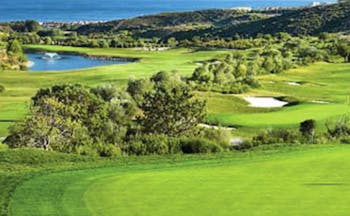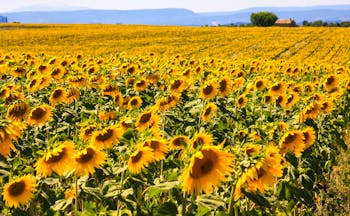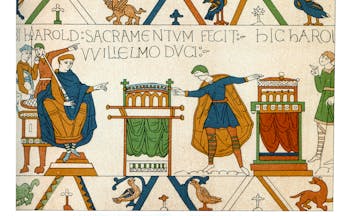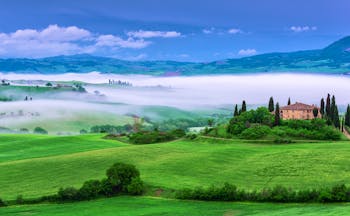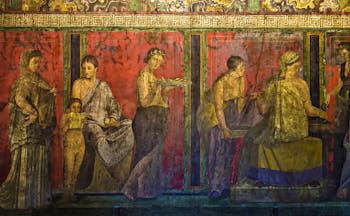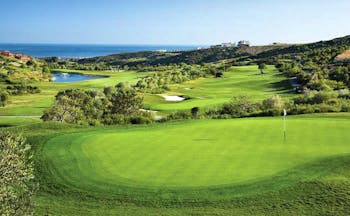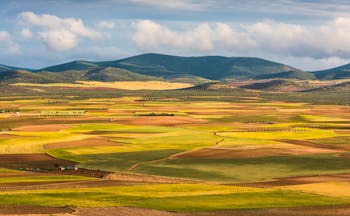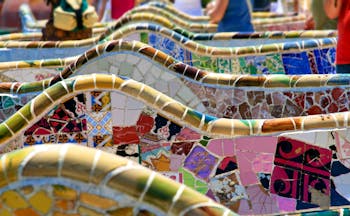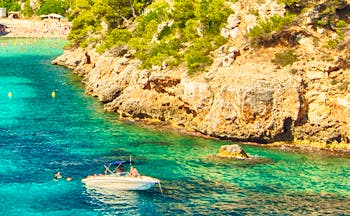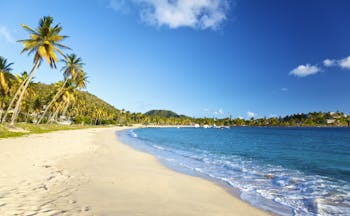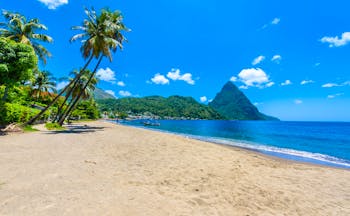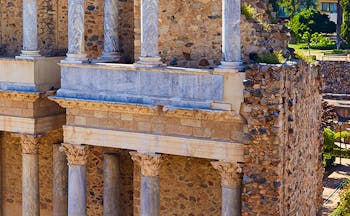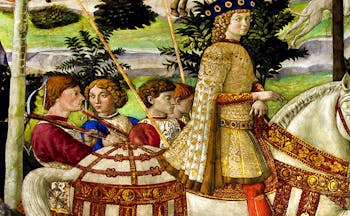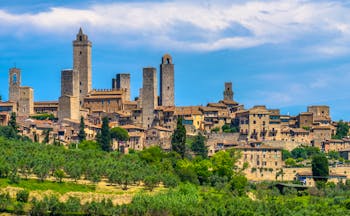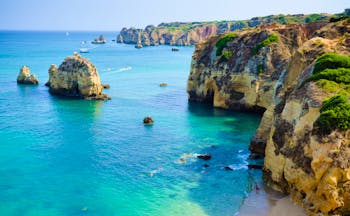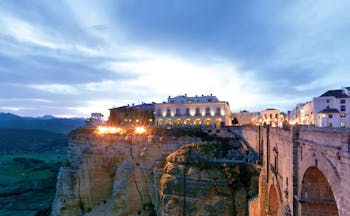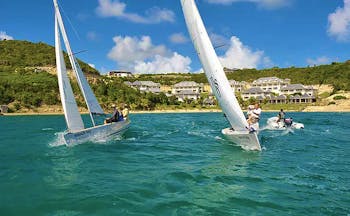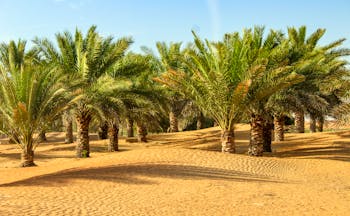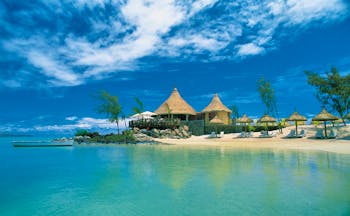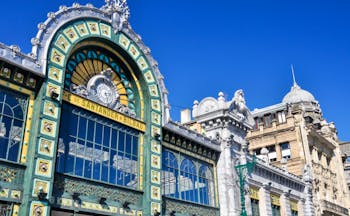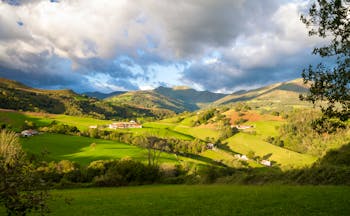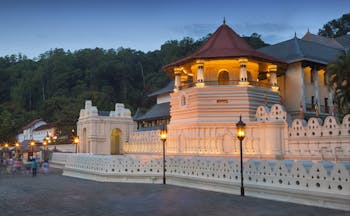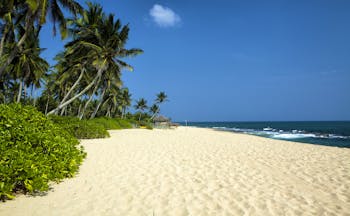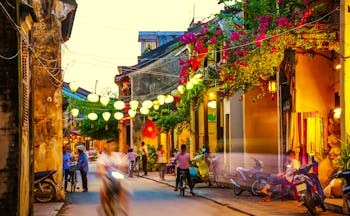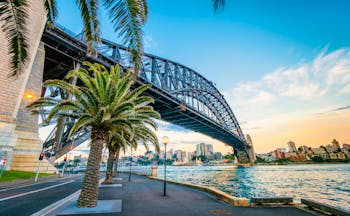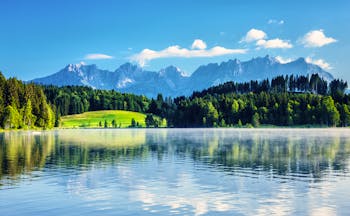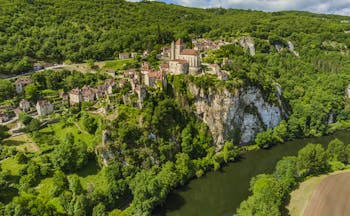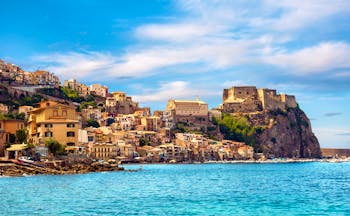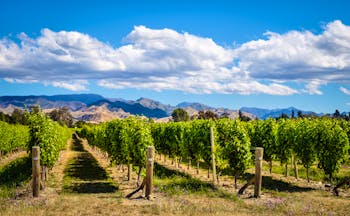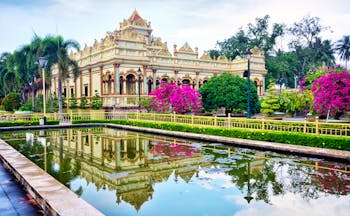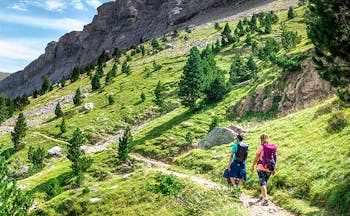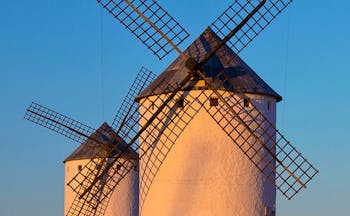Luxury fly-drive touring holiday of Spanish Extremadura discovering the history and heritage of central Spain
This 9-night luxury fly-drive holiday of Extremadura in central Spain offers you an authentic insight into the history and heritage of this little-known but fascinating region, central to the history of Spain through the ages. From Roman to Moorish, from Christian to contemporary, there is secular and religious architecture, palaces and convents, cathedrals and aqueducts, as well as hearty local cuisine to discover. You arrive in Madrid and drive southwest to Toledo for your first two nights in Extremadura. This luxury tour begins with the Parador de Toledo, a building of exceptional history that sits just across the river from Spain’s former capital. Spend two days exploring the City of Three Cultures, visiting such landmarks as the exquisite Gothic cathedral, and the Cristo de la Luz mosque. The intriguing amalgamation of such different cultures gives Toledo a unique edge. From here, drive into Extremadura for one night at the Parador de Trujillo, the former Convent of Santa Clara. Trujillo is an important stop on the Ruta de la Conquistadores, due to its status as the birthplace of some of the people responsible for the discovery of the New World. This important history is evident in many of the town’s streets, though nowhere more clearly than in the museum. Base most of your exploration of Trujillo in the Plaza Mayor, one of the most beautiful squares in Spain, which is lined on all sides by enchanting historic buildings. Drive on after a night in Trujillo to Merida. This town is renowned for the depth of its Roman heritage, once the capital of Roman Lusitania. Navigate the quaint streets seeking out the theatre, amphitheatre, aqueduct, and other monuments, finishing off each day with a night of relaxation at the Parador de Merida, situated within another convent. Your next stop, Caceres, is a mediaeval town riddled with evidence of both its Moorish and Christian heritage. Stay at the Parador de Caceres for two nights, a 14th century palace, while you explore this picturesque town and everything that is encased within its old walls. Your final port of call on this luxury touring holiday is at the Parador de Plasencia, a charming 15th century convent. Spend your last two days exploring the incredibly diverse architecture of Plasencia held within its mediaeval walls, brought about by its multicultural history, and taking the opportunity to uncover the smaller settlements and landforms that punctuate the surrounding landscape. From here, drive back to Madrid to return your hire-car and catch a flight to home.
Highlights
Toledo • Iglesia de Santiago de Arrabal in Toledo • Alcázar of Toledo • Merida • Alcazaba citadel • Caceres • Plasencia • Jerte Valley orchards • Trujillo • Plaza Major in Trujillo
Day by day
Begin this fly-drive luxury touring holiday of Spanish Extremadura by flying into Madrid, where you collect a hire-car. Drive about 50 miles southwest towards Toledo, a historic city in the region of Castille-La Mancha. Stay for two nights in the Parador de Toledo, a four-star hotel across the river from Toledo’s old town. Best visited mid-week to avoid the crowds, Toledo is known as the City of Three Cultures due to the co-existence of Christianity, Islam and Judaism. Built into a wide meander of the River Tajo, this spectacular city combines the spires of its Gothic cathedral, and the domes and archways of synagogues and mosques, with the impressive landscape of central Spain.
Toledo was made famous by El Greco, a Greek painter who made the city his home in the 16th century. The 13th century Gothic cathedral, the crowning glory of the town centre, was built on the site of a Muslim mosque and now houses a rich collection of paintings by the likes of Rubens, Raphael, and Titian, in the Sanctuary. Enter this formidable building through the Puerta de Mollete, from which food was once distributed to the poorer residents. Inside, 88 columns support the vaulted roof, and some of the stained-glass windows date back to the 13th century. Admire the craftsmanship of the marble tombs in the Capilla de Santiago, and the artistry of the Retablo of the New Testament in the Capilla Mayor. For a taste of the exotic, perhaps move on to the Cristo de la Luz, decorated with keyhole archways and colourful stone. The Iglesia de Santiago de Arrabal is the most stunning example of Mudéjar architecture in the city, constructed out of dark brick, with curved, indented walls. The Puerta Vieja de Bisagra is the only remaining section of the Moorish town walls, and the Iglesia de Santo Tomé resembles the minarets of Marrakech. The Alcázar of Toledo sits at the highest point of the city, overlooking both the river and the bustling streets. Now, this 16th century palace houses a military museum, which sheds valuable light on Spanish military history. These are just a few of the eclectic architectural and historical delights that Toledo has to offer, and a few hours wandering around the city are sure to throw up infinite treasures, including the baths and caves. Do not miss out on the local products sold in the many small shops tucked away on the side streets; admire the damascene metalwork and indulge in the Toledo marzipan. From the balconies of the Parador de Toledo, you have views across the spires, towers, and higgledy-piggledy roofs of the city. The rooms and public spaces are luxurious and comfortable, with traditional Mudéjar designs, wooden beams, and beautiful staircases acting as the signature features. The restaurant offers a unique opportunity to sample intriguing dishes inspired by the Castile-La Mancha cuisine.
Leave Toledo to travel west to Trujillo, a journey of just over two hours. The small town of Trujillo is centred around one of the prettiest squares in Spain, the Plaza Mayor, and overlooked by the 13th century Arabian Caliphate Castle with outstanding views of the Extremadura countryside. Begin your exploration of this town in the Plaza Mayor, admiring the many important buildings that line it, and the bronze-cast statue of Francisco Pizarro at its centre. Take in the distinctive architecture of Trujillo, best seen in the angular balconies, the temple with Renaissance side chapels, the classical portico and Tuscan columns of the Palace of the Dukes of San Carlos, and the ‘Bread’ colonnades and segmented arches of the Palace of the Marquis of Piedras Albas. The Palace of the Marquises of the Conquistas is the most magnificent building on the square, with Plateresque decorations and two alabaster columns. As the birthplace of colonisers such as Francisco Pizarro (conqueror of Peru), and therefore a key point on the Ruta de la Conquistadores, Trujillo is home to a number of elaborate palaces and manor houses built with gold from the New World. The Coria Museum illustrates the story behind the discovery of the New World and introduces you to the key Spanish figures. In the evening of your night in Trujillo, taste some of the local specialities, including bean soups and meat dishes, particularly Iberian pork. Stay for one night in the Parador de Trujillo, a peaceful four-star establishment set within the former convent of Santa Clara, with two beautiful cloisters, one of which dates from the Renaissance. This stop on the tour offers a brief introduction to one of Spain’s most beautiful towns, and a night of relaxation in another historical Spanish property.
Drive approximately one hour southwest to Mérida, the capital of Extremadura. Stay two nights at the Parador de Mérida, an attractive four-star hotel in an 18th century convent, which boasts a verdant inner courtyard and beautiful gardens. Like the white-washed exterior, the rooms are light and airy, with traditional furnishings and the occasional splash of colour.
Explore Mérida, home to some of Spain’s finest examples of Roman architecture, and once the capital of Roman Lusitania. Begin with the 1st century theatre and amphitheatre, the former of which is built around a stage set of 2 stacked rows of columns decorated with sculptures of deities and imperial figures. The amphitheatre also retains some of its original features, including the box, gallery, and grandstands, and is still in use today. In the city centre, through the Arch of Trajan, stands the Temple of Diana. Scattered throughout the city are the ruins of Spain’s longest Roman bridges, one of which extends to over 800 metres, with 60 arches, the stony paving of an excavated Roman Street, and the Aqueduct de los Milagros, all of which establish a distinct atmosphere in this historic town. Across the river is the Alcazaba citadel, the fortress of which preserves an underground Roman reservoir, now decorated with Visigothic pilasters. The National Museum of Roman Art is the perfect stop after a day of exploring the ruins on the streets. Marvel at the excellently preserved sculptures, columns, and mosaics, all of which are housed in a striking contemporary building that, in its arches, tall halls, and Latinate marble name plate on the front, harks back to the Roman architectural structures that it honours. In the evenings, return to the Parador de Mérida to relax in the luxurious public rooms, before dining in the hotel’s restaurant on local delicacies, accompanied by Ribera del Guadiana wines. Finish off your meals in Mérida with desserts made by the expert pastry chefs. After dark, head back into the town centre to see the ruins and quaint streets lit up by atmospheric lighting.
Head northwards to the walled city of Cáceres, approximately one hour’s drive away. Stay two nights at the Parador de Cáceres, a 14th century palace with a historic ambience, located in the heart of the old town. The rooms have harnessed the beauty of the building’s original splendour, with columns and arches, and arcaded courtyards downstairs. The furnishings of the rooms are contemporary and chic, which serves to highlight the legacy of the building itself, as well as establish a relaxing sense of comfort. There is plenty of time on your two days in Cáceres to discover the authentically mediaeval old town, which appears almost unchanged since its 16th century heyday, complete with cobbled streets and a convent selling traditional candied egg yolks.
With an extremely high concentration of historic buildings, Cáceres’ prosperous history is evident in its Renaissance palaces, ancestral houses, towers, and plazas, many of which date from the 15th and 16th centuries. The history of battles between the Moors and the Christians has left its mark on these mediaeval streets, which are now a blend of Roman, Islamic, Gothic, and Italian Renaissance styles. There are over 30 Islamic towers, though the most famous is the Torre del Bujaco, a 12th century tower that overlooks the pretty Plaza Mayor. The Concatedral de Santa María, situated on a plaza of the same name, dates from the 15th century. Its imposing austere façade gives way to a luminous interior, with a brilliantly carved cedar altarpiece as the centre point. This impressive building now houses several noble tombs, an ecclesiastical museum, a series of chapels, and a bell tower which offers fantastic views over the Old Town. The Roman heritage of the town can be seen in the Arco del Cristo, a Roman gate that links two sloping streets together. On the Plaza de San Jorge stands the Iglesia de San Francisco Javier, an 18th century Jesuit Church. Though a more modern addition to the town, its white towers have become somewhat iconic; inside, its golden altar, in contrast with its bright white walls, is mesmerising. The pathways and sights in Cáceres are incredibly rewarding and varied, crossing bridges, and climbing small hills, passing buildings that mix the typically Spanish white-washed houses with those of warm stone. The best times to enjoy the magnificent city that lies within these mediaeval walls are either on a quiet day, or in the evening. At these times, the peaceful beauty of the place can be enjoyed, as well as the horizon sculpted by the roofs and sculptures of Cáceres’ religious and historic buildings.
Drive approximately one hour northeast to Plasencia, a mediaeval walled town strategically located along the Ruta de la Plata, one of the pilgrimage routes to Santiago de Compostela. Stay two nights in the Parador de Plasencia, a Gothic-style hotel set within a 15th century convent in the heart of the town’s historic quarter. This irregular building has undeniable charm, with mottled stone walls, windows of varying sizes, and picturesque cloisters and courtyards.
Take the time to explore the riverside town, famed for its weekly market dating back to the 12th century, as well as its two cathedrals, towering above the town, which are back-to-back. The Old Cathedral was built in the 13th century, in-keeping with the Romanesque style which had only just reached Plasencia due to its position on the Christian and Muslim border. The New Cathedral was built in the 16th century with Gothic, Renaissance, and Plateresque elements on both the interior and exterior designs. The Cathedral Museum nearby houses some of the greatest artworks that have been on display in the cathedral, from the Gothic panel of the Caná Wedding, to the works of Baroque painters such as Gregorio Fernández and the Brothers Churriguera. The Palacio de los Monroy is the perfect example of Palatine architecture. For those looking for something a little different to end your tour, perhaps visit the Ethnographic-Textile Museum near the cathedrals, the Hunting Collection at the Palace of Mirabel, or the Sanctuary of the Virgin of the Orchard. From here you can easily venture into the surrounding countryside to discover the farmsteads among the waterfalls and twisting rivers, the wildlife of the Monfragüe National Park, the pretty villages of the Sierra de Gata, and the Jerte Valley which is filled with cherry blossom in spring. Dine at the Parador de Plasencia in the evenings, on delicacies such as partridge, lamb, pork, figs, trout, and local favourites such as cheese from La Serena, and cherries from the Jerte Valley. You may want to plan your visit for early in the year to see the Plaza Mayor at Plasencia fill with lively celebration on Shrove Tuesday, or simply aim for the heat of summer to witness the landscape around the Jerte River at its most splendid.
Leave Plasencia and drive about two and a half hours back to Madrid Airport, to drop off your hire-car for your flight home. If your flight is in the evening, you may wish to take a detour to Salamanca, adding only another hour to your drive. As the capital of the Castile region, Salamanca has much in the way of historic architecture to offer, including two cathedrals, a grand square, and an ancient convent, as well as a lively and infectious atmosphere.
Enjoyed it very much!Mr T, June 2018
Holiday price guide Prices from £1,630 per person based on two people sharing a double or twin room.
Holiday Code SNFD09
Call us on 01392 441245
Luxury fly-drive touring holiday of Spanish Extremadura discovering the history and heritage of central Spain
Begin this fly-drive luxury touring holiday of Spanish Extremadura by flying into Madrid, where you collect a hire-car. Drive about 50 miles southwest towards Toledo, a historic city in the region of Castille-La Mancha. Stay for two nights in the Parador de Toledo, a four-star hotel across the river from Toledo’s old town. Best visited mid-week to avoid the crowds, Toledo is known as the City of Three Cultures due to the co-existence of Christianity, Islam and Judaism. Built into a wide meander of the River Tajo, this spectacular city combines the spires of its Gothic cathedral, and the domes and archways of synagogues and mosques, with the impressive landscape of central Spain.
Toledo was made famous by El Greco, a Greek painter who made the city his home in the 16th century. The 13th century Gothic cathedral, the crowning glory of the town centre, was built on the site of a Muslim mosque and now houses a rich collection of paintings by the likes of Rubens, Raphael, and Titian, in the Sanctuary. Enter this formidable building through the Puerta de Mollete, from which food was once distributed to the poorer residents. Inside, 88 columns support the vaulted roof, and some of the stained-glass windows date back to the 13th century. Admire the craftsmanship of the marble tombs in the Capilla de Santiago, and the artistry of the Retablo of the New Testament in the Capilla Mayor. For a taste of the exotic, perhaps move on to the Cristo de la Luz, decorated with keyhole archways and colourful stone. The Iglesia de Santiago de Arrabal is the most stunning example of Mudéjar architecture in the city, constructed out of dark brick, with curved, indented walls. The Puerta Vieja de Bisagra is the only remaining section of the Moorish town walls, and the Iglesia de Santo Tomé resembles the minarets of Marrakech. The Alcázar of Toledo sits at the highest point of the city, overlooking both the river and the bustling streets. Now, this 16th century palace houses a military museum, which sheds valuable light on Spanish military history. These are just a few of the eclectic architectural and historical delights that Toledo has to offer, and a few hours wandering around the city are sure to throw up infinite treasures, including the baths and caves. Do not miss out on the local products sold in the many small shops tucked away on the side streets; admire the damascene metalwork and indulge in the Toledo marzipan. From the balconies of the Parador de Toledo, you have views across the spires, towers, and higgledy-piggledy roofs of the city. The rooms and public spaces are luxurious and comfortable, with traditional Mudéjar designs, wooden beams, and beautiful staircases acting as the signature features. The restaurant offers a unique opportunity to sample intriguing dishes inspired by the Castile-La Mancha cuisine.
Leave Toledo to travel west to Trujillo, a journey of just over two hours. The small town of Trujillo is centred around one of the prettiest squares in Spain, the Plaza Mayor, and overlooked by the 13th century Arabian Caliphate Castle with outstanding views of the Extremadura countryside. Begin your exploration of this town in the Plaza Mayor, admiring the many important buildings that line it, and the bronze-cast statue of Francisco Pizarro at its centre. Take in the distinctive architecture of Trujillo, best seen in the angular balconies, the temple with Renaissance side chapels, the classical portico and Tuscan columns of the Palace of the Dukes of San Carlos, and the ‘Bread’ colonnades and segmented arches of the Palace of the Marquis of Piedras Albas. The Palace of the Marquises of the Conquistas is the most magnificent building on the square, with Plateresque decorations and two alabaster columns. As the birthplace of colonisers such as Francisco Pizarro (conqueror of Peru), and therefore a key point on the Ruta de la Conquistadores, Trujillo is home to a number of elaborate palaces and manor houses built with gold from the New World. The Coria Museum illustrates the story behind the discovery of the New World and introduces you to the key Spanish figures. In the evening of your night in Trujillo, taste some of the local specialities, including bean soups and meat dishes, particularly Iberian pork. Stay for one night in the Parador de Trujillo, a peaceful four-star establishment set within the former convent of Santa Clara, with two beautiful cloisters, one of which dates from the Renaissance. This stop on the tour offers a brief introduction to one of Spain’s most beautiful towns, and a night of relaxation in another historical Spanish property.
Drive approximately one hour southwest to Mérida, the capital of Extremadura. Stay two nights at the Parador de Mérida, an attractive four-star hotel in an 18th century convent, which boasts a verdant inner courtyard and beautiful gardens. Like the white-washed exterior, the rooms are light and airy, with traditional furnishings and the occasional splash of colour.
Explore Mérida, home to some of Spain’s finest examples of Roman architecture, and once the capital of Roman Lusitania. Begin with the 1st century theatre and amphitheatre, the former of which is built around a stage set of 2 stacked rows of columns decorated with sculptures of deities and imperial figures. The amphitheatre also retains some of its original features, including the box, gallery, and grandstands, and is still in use today. In the city centre, through the Arch of Trajan, stands the Temple of Diana. Scattered throughout the city are the ruins of Spain’s longest Roman bridges, one of which extends to over 800 metres, with 60 arches, the stony paving of an excavated Roman Street, and the Aqueduct de los Milagros, all of which establish a distinct atmosphere in this historic town. Across the river is the Alcazaba citadel, the fortress of which preserves an underground Roman reservoir, now decorated with Visigothic pilasters. The National Museum of Roman Art is the perfect stop after a day of exploring the ruins on the streets. Marvel at the excellently preserved sculptures, columns, and mosaics, all of which are housed in a striking contemporary building that, in its arches, tall halls, and Latinate marble name plate on the front, harks back to the Roman architectural structures that it honours. In the evenings, return to the Parador de Mérida to relax in the luxurious public rooms, before dining in the hotel’s restaurant on local delicacies, accompanied by Ribera del Guadiana wines. Finish off your meals in Mérida with desserts made by the expert pastry chefs. After dark, head back into the town centre to see the ruins and quaint streets lit up by atmospheric lighting.
Head northwards to the walled city of Cáceres, approximately one hour’s drive away. Stay two nights at the Parador de Cáceres, a 14th century palace with a historic ambience, located in the heart of the old town. The rooms have harnessed the beauty of the building’s original splendour, with columns and arches, and arcaded courtyards downstairs. The furnishings of the rooms are contemporary and chic, which serves to highlight the legacy of the building itself, as well as establish a relaxing sense of comfort. There is plenty of time on your two days in Cáceres to discover the authentically mediaeval old town, which appears almost unchanged since its 16th century heyday, complete with cobbled streets and a convent selling traditional candied egg yolks.
With an extremely high concentration of historic buildings, Cáceres’ prosperous history is evident in its Renaissance palaces, ancestral houses, towers, and plazas, many of which date from the 15th and 16th centuries. The history of battles between the Moors and the Christians has left its mark on these mediaeval streets, which are now a blend of Roman, Islamic, Gothic, and Italian Renaissance styles. There are over 30 Islamic towers, though the most famous is the Torre del Bujaco, a 12th century tower that overlooks the pretty Plaza Mayor. The Concatedral de Santa María, situated on a plaza of the same name, dates from the 15th century. Its imposing austere façade gives way to a luminous interior, with a brilliantly carved cedar altarpiece as the centre point. This impressive building now houses several noble tombs, an ecclesiastical museum, a series of chapels, and a bell tower which offers fantastic views over the Old Town. The Roman heritage of the town can be seen in the Arco del Cristo, a Roman gate that links two sloping streets together. On the Plaza de San Jorge stands the Iglesia de San Francisco Javier, an 18th century Jesuit Church. Though a more modern addition to the town, its white towers have become somewhat iconic; inside, its golden altar, in contrast with its bright white walls, is mesmerising. The pathways and sights in Cáceres are incredibly rewarding and varied, crossing bridges, and climbing small hills, passing buildings that mix the typically Spanish white-washed houses with those of warm stone. The best times to enjoy the magnificent city that lies within these mediaeval walls are either on a quiet day, or in the evening. At these times, the peaceful beauty of the place can be enjoyed, as well as the horizon sculpted by the roofs and sculptures of Cáceres’ religious and historic buildings.
Drive approximately one hour northeast to Plasencia, a mediaeval walled town strategically located along the Ruta de la Plata, one of the pilgrimage routes to Santiago de Compostela. Stay two nights in the Parador de Plasencia, a Gothic-style hotel set within a 15th century convent in the heart of the town’s historic quarter. This irregular building has undeniable charm, with mottled stone walls, windows of varying sizes, and picturesque cloisters and courtyards.
Take the time to explore the riverside town, famed for its weekly market dating back to the 12th century, as well as its two cathedrals, towering above the town, which are back-to-back. The Old Cathedral was built in the 13th century, in-keeping with the Romanesque style which had only just reached Plasencia due to its position on the Christian and Muslim border. The New Cathedral was built in the 16th century with Gothic, Renaissance, and Plateresque elements on both the interior and exterior designs. The Cathedral Museum nearby houses some of the greatest artworks that have been on display in the cathedral, from the Gothic panel of the Caná Wedding, to the works of Baroque painters such as Gregorio Fernández and the Brothers Churriguera. The Palacio de los Monroy is the perfect example of Palatine architecture. For those looking for something a little different to end your tour, perhaps visit the Ethnographic-Textile Museum near the cathedrals, the Hunting Collection at the Palace of Mirabel, or the Sanctuary of the Virgin of the Orchard. From here you can easily venture into the surrounding countryside to discover the farmsteads among the waterfalls and twisting rivers, the wildlife of the Monfragüe National Park, the pretty villages of the Sierra de Gata, and the Jerte Valley which is filled with cherry blossom in spring. Dine at the Parador de Plasencia in the evenings, on delicacies such as partridge, lamb, pork, figs, trout, and local favourites such as cheese from La Serena, and cherries from the Jerte Valley. You may want to plan your visit for early in the year to see the Plaza Mayor at Plasencia fill with lively celebration on Shrove Tuesday, or simply aim for the heat of summer to witness the landscape around the Jerte River at its most splendid.
Leave Plasencia and drive about two and a half hours back to Madrid Airport, to drop off your hire-car for your flight home. If your flight is in the evening, you may wish to take a detour to Salamanca, adding only another hour to your drive. As the capital of the Castile region, Salamanca has much in the way of historic architecture to offer, including two cathedrals, a grand square, and an ancient convent, as well as a lively and infectious atmosphere.
Enjoyed it very much!Mr T, June 2018
Holiday price guide Prices from £1,630 per person based on two people sharing a double or twin room.
Holiday Code SNFD09
Our prices include
● Scheduled flights with British Airways, from London to Madrid return, economy class. Flights from other UK airports can be arranged.
● Hire of a Group C car for ten days
● 2 nights’ bed and breakfast in a Standard double room at the Parador de Toledo
● 1 night’s bed and breakfast in a Standard double room at the Parador de Trujillo
● 2 nights’ bed and breakfast in a Standard double room at the Parador de Merida
● 2 nights’ bed and breakfast in a Standard double room at the Parador de Caceres
● 2 nights’ bed and breakfast in a Standard double room at the Parador de Plasencia
● Concierge service and Expressions Holidays regional helpful hints
Our prices do not include
● Early check-in or late check-out at any hotels (although we can arrange this on request at additional cost)
● Any other services not mentioned above, such as transfers and meals except breakfast at hotels
● Personal holiday insurance. This is essential and cover should be in place from when you book the holiday.
● Local tourist tax, usually between Euros 1 and 3 per person per night, and payable locally to the hotel
Additional information
Driving times for this touring holiday
Madrid to Toledo 35 minutes
Toledo to Trujillo 2 hours
Trujillo to Mérida 55 minutes
Mérida to Cáceres 55 minutes
Cáceres to Plasencia 55 minutes
Call us on 01392 441245
Luxury fly-drive touring holiday of Spanish Extremadura discovering the history and heritage of central Spain
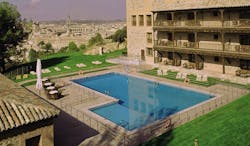
Parador de Toledo is a 4-star historical hotel in a beautiful location overlooking Toledo. The comfort and luxury of this hotel and its delicious local cuisine is ideal after a day's exploration of the historic city.
Standard double room

Parador de Trujillo is a historical, 4-star boutique hotel in the mediaeval town. This hotel can be counted amongst the historical sights of Trujillo, and affords guests modern luxuries such as delicious cuisine and luxury accommodation in a historical atmosphere.
Standard double room
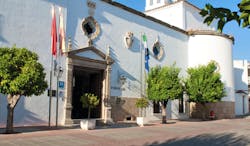
Parador de Merida is a 4-star boutique hotel offering a tranquil, historical break near Merida's Roman Ruins. Grand interiors and immaculate outdoor spaces ensure that this is a relaxing retreat from which to explore the city and the outer region.
Standard double room
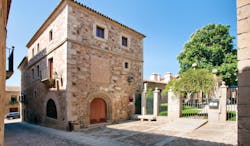
Parador de Cáceres is a 4-star historic, boutique hotel in an excellent central location. With a melting pot of architectural features throughout the hotel building, the historic and the modern combine to create a luxurious residence and a comforting atmosphere.
Standard double room
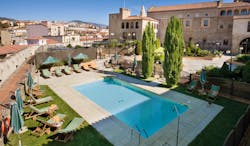
Parador de Plasencia is a beautiful 4-star boutique hotel blending historicity and modernity. This hotel has equally beautiful interior and exterior spaces, with a serene outdoor pool perfect for basking in the sun after a morning of exploring.
Standard double room
Enjoyed it very much!Mr T, June 2018
Holiday price guide Prices from £1,630 per person based on two people sharing a double or twin room.
Holiday Code SNFD09
Call us on 01392 441245
Luxury fly-drive touring holiday of Spanish Extremadura discovering the history and heritage of central Spain
About Heart of Spain
An Expressions tailor-made holiday to the Heart of Spain feature some of the best four and five star hotels in central Spain, featuring vineyard hotels, rural estates and city properties. Located at the geographical heart of Spain is its vibrant capital, Madrid, where days can be filled with art galleries and atmospheric outdoor cafes, and evenings promise an energetic nightlife. Surrounding the city are the dry plains of the country's central plateau which are divided by spectacular mountain ranges and dotted with numerous castles, magnificent cathedrals and ancient Roman ruins. The regions which make up Spain's central plateau have all played a hugely important role in the history of modern Spain, which is evident in the numerous castles which were built to protect towns and villages as the Moors fought the Christians in the 10th and 11th centuries. These are some of the least visited parts of Spain where few tourists venture outside of the main cities, ensuring that visitors will leave feeling like they have discovered something new. At the centre of Spain is Madrid, where atmospheric cobbled streets link bustling squares which are filled with pavement cafes and flea markets, whilst tree-line boulevards are overlooked by neo-classical buildings. Surrounding the city are the dry plains of the country's central plateau which are divided by spectacular mountain ranges and dotted with numerous castles, magnificent cathedrals and ancient Roman ruins. To the north of Madrid is Castilla y León, an elevated region which has played a hugely important role in the history of modern Spain. Rolling countryside is littered with historic cities, isolated villages and mediaeval castles, built by the Christians to defend against the Moorish invaders. Salamanca, Avila, Segovia, León, Valladolid and Burgos are all home to a wealth of art and stunning architecture, including Gothic cathedrals and Roman structures. Away from the cities are natural attractions including mountain ranges and nature reserves, with wheat fields and vineyards covering the high plateaus. To the south and east of Madrid is Castilla-La Mancha, an expansive region with dry plains stretching towards mountains in the distance. The predominantly flat scenery is made up of olive groves, wheat fields, extensive vineyards, hilltop castles and the iconic windmills described by Cervantes. Head to the historic city of Toledo, where Christian, Jewish and Arab cultures blend to create a popular tourist destination, or to Cuenca, a dramatic town where houses seemingly dangle over a plunging gorge. Further west towards the border with Portugal is Extremadura, a region with green pastures and rolling hills, forests and fertile river valleys, as well as charming towns boasting stunning examples of Roman architecture. Elaborate palaces and manor houses are found in clusters throughout the region, built by conquistadors with gold from the New World.
Highlights of the Heart of Spain
The three world-class art galleries which make up Madrid's Golden Triangle of Art, home to works by Pablo Picasso, Salvador Dalí and Francisco de Goya. The historical sights of Old Madrid, including the lavish Royal Palace, the grand Plaza Mayor and the city's spiritual centre, Puerta del Sol. Parque del Retiro, a popular spot for relaxation in the centre of Madrid with a boating lake. El Escorial, a large royal residence just outside Madrid which also functions as a monastery and is where many Spanish monarchs are buried. The Gothic cathedrals of León, Burgos and Toledo which feature stunning stained glass, mediaeval art and elaborate sculptures. The numerous castles which are scattered across the region including the Gothic-style Belmonte Castle, the Mudejár Coca Castle and the Moorish Alcazaba of Badajoz. The university city of Alcalá de Henares, birthplace of Cervantes, the 16th century author who wrote about the adventures of Don Quixote. The walled city of Ávila. The university city of Salamanca. Segovia, with its Roman Aqueduct and distinctive castle. Cuenca, a picturesque old town with houses which appear to hang over a gorge. The iconic windmills which sit on the plains near Consuegra. Roman ruins in Mérida. Elaborate palaces and manor houses in Trujillo and Cáceres. The wine-producing regions throughout central Spain including Ribera del Duero, La Mancha and Valdepeñas where visitors can visit vineyards and enjoy wine tastings. Mountain ranges which divide the central plateau, with many opportunities for walking and rock climbing.
Festivals in the Heart of Spain
February: Caja Madrid Flamenco Festival, February to March: Madrid Carnival, February to March: Madrid Contemporary Art Fair, March/April: Holy week celebrations, May: San Isidro bullfighting festival (Madrid), May/June: Toledo Corpus Christi processions (Toledo), July to August: Madrid summer arts festival, October: Saffron Rose Festival (Consuegra), October: Cervantes Week (Alcala de Henares), October to November: Madrid Autumn Festival
Gastronomy in the Heart of Spain
As expected, Madrid is home to some excellent restaurants serving a great range of cuisine from throughout Spain and around the world. Roasted meat and game as well as a variety of broths and stews are common features on menus throughout central Spain, where traditional cooking is simple and hearty. Cuisine varies slightly between the regions, with more paprika and saffron being used in the south. Various pulses are grown on the plains of Castilla y León, whilst Manchego cheese produced in La Mancha and high quality Ibérico ham is produced in Extremadura. There are a number of wine regions which produce high-quality red and white wines. Local dishes include ‘Pollo a lo Padre Pero’ (chicken with a spicy sauce), ‘El frite’ (fried lamb), ‘Sopa de ajo’ (garlic soup), ‘Pisto manchego’ (similar to ratatouille), ‘Yemas’ (a rich dessert made with egg yolks).
Climate in the Heart of Spain
The climate of central Spain is generally quite extreme, with extremely hot summers and bitterly cold yet dry winters. Rainfall is generally quite low thanks to the mountains which surround the region. Madrid can be almost unbearable in the summer months as temperatures reach 40 degrees, whilst during the temperatures regularly drop below freezing. Spring and autumn are the best times to visit as temperatures are warm and pleasant, although there is increased rainfall.

